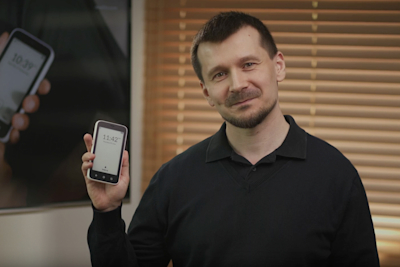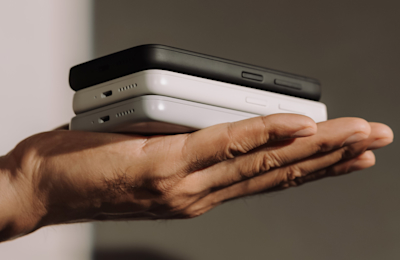
Why did Mudita decide to build a low SAR phone?
There is a large amount of concern about cell phone radiation and the specific absorption rate (SAR) value of cell phones. For most people, SAR values don’t mean anything or the purpose and meaning of the measurement is simply not understood. Of course, in several countries, such as in the USA or in Europe,[1][2] the SAR limits in mobile devices, such as telephones or tablets, are precisely defined.[3] What is a SAR value and are we to be afraid or worried by it?
What is SAR?
Let’s start with the basics.
We all know that phones emit electromagnetic radiation in the radiofrequency range (RF-EMF). As we’ve explained in a previous post,[4] the frequency emitted is between 850-2100MHz, depending on our device and/or our carrier’s network. Most of the time, phones have several kinds of antennas installed, such as Bluetooth, WiFi, GPS.
Mobile phones, use RF-EMF radiation in order to communicate with phone masts. The waves are transmitted in all directions. An electromagnetic wave falling on objects is reflected or absorbed by them. When we talk on the phone, our device close to our ear, a part of the emitted radiation is absorbed by the body. In this case, if our phone is close to one of our ears, then part of the radiation is absorbed by our head. This is where the most important factor comes in: SAR.
SAR is a measurement, it measures the amount of radio frequency energy absorbed by the human body when using a mobile phone. It is the speed with which the radiation emitted by a radio frequency (RF) electromagnetic field is absorbed by the body and has units of watts per kilogram (W/kg).
The lower the SAR value, the better.[5][6] SAR is usually averaged either over the whole body, or over a small sample volume (typically 1g or 10g of tissue). The value cited is then the maximum level measured in the body part studied over the stated volume or mass.[7]
What are the rules and regulations?
All mobile phones have their SAR measured before they are available for purchase. For quite a long time there were no established standards for SAR across the mobile phone industry because there wasn’t any governmental action to require it.[8]
However, in the USA, the FCC, Federal Communications Commission, set the radio frequency safety guidelines that all phones must meet before being sold in the US (1992). In Europe, “the European Council Recommendation 519/1999/EC for exposure guidelines has adopted the recommendations made by the International Commission on Non-Ionising Radiation Protection (ICNIRP Guidelines 1998)”.[2]
The SAR scales vary between the USA, Australia and the EU (accordingly 1,6 W/kg in 1g of tissue to 2,0 W/kg in 10g of tissue). These differences result from slightly different SAR measurement methods. In both situations, specialists use a standardized or phantom model of the human head and body to measure SAR values. The phantom body parts are filled with liquids which simulate the radio frequency absorption characteristics of the human tissues. The fluids are frequency-dependent, so a standardized fluid for a measurement at 1800 MHz will be different to a measurement at 900 MHz.
Why low SAR?
Mobile devices emit electromagnetic fields (EMF) that might be harmful to the human body. Regarding the electromagnetic field radiation and SAR, we mostly consider the thermal effect. Apart from that there are also non-thermal effects like fatigue, sleep disturbances, dizziness and loss of mental attention, etc.[9][10] The wavelength itself is not the only thing that we should take into consideration. Signal strength, SAR and exposure time play a significant role in determining what is safe and what is not.
Most phone companies try to protect their customers against the adverse effects of EMF Radiation and of the thermal effects by reducing the SAR of the device.
Why did we decide to build a phone with an ultralow SAR value?
This is a very good question. The SAR value of a mobile device plays a role in the heat that the device generates. However, it does not protect you from the adverse, non-thermal effects on the human body. It is very important that we all care about the SAR value of our electronic devices. Studies show that certain individuals might need to be more concerned about limiting their exposure to electromagnetic radiation than others. The largest groups of people particularly exposed to non-thermal SAR effects are:
Pregnant women. The technology offered today, puts much stronger transmitters and receivers closer to users of all ages, more so than ever before. The increased radiation needed to support this is the main reason for certain health problems. A groundbreaking study, conducted at Yale University[11] showed that in-utero radiofrequency exposure from cellular telephones does affect adult mouse behavior. Two years after that study, irradiation with electromagnetic radiation (897 MHz), was found to cause a decrease in the number of births of animals, changing the sex ratio towards the increase in the number of males.[12] These studies were conducted on animals.
Children. All children are more vulnerable than adults when it comes to EMF exposure,[13] [14] [15]their bodies are immature and their nervous and immune systems are still developing. EMF radiation is known to penetrate the brains of children much deeper than it does the brains of adults. These differences are due to the higher water content in children’s tissues and the fact that their skulls are thinner. Each year, there are more countries that prohibit targeted advertising and sales of mobile phones for children.[16][17] The most restrictive law was passed in Taiwan,[18][19] where parents may be fined for letting children under the age of two use electronic devices. Many countries have also adopted amendments to the current law, stating the need to protect children from the effects of electromagnetic radiation originating from WiFi networks.[20][21][22]The only way to do so, is to turn off the wireless connection to the Internet and switch to a hardwired one. In some countries it is also forbidden to place phone masts in the vicinity of playgrounds and nursery schools.[23][24]
People with implanted electronic cardiac pacemakers. A cardiac pacemaker is an electrical device used to electrically stimulate the heart rhythm. It is used when the natural pacemaker – a sinus node, permanently ceases to fulfil its role as a result of various diseases, which leads to symptoms of cerebral ischemia or heart failure. To put it simply, it’s a small electronic device implanted in the human body. Due to it being electronic, it might interfere with different electronic devices. There are some studies showing that the overall risk of clinically significant adverse events related to EMF radiation in recipients of cardiac pacemakers is very low but environmental and industrial sources of electromagnetic radiation are relatively safe when the exposure time is limited and distance with cardiac pacemakers is maximized.[25] It is very possible, that the use of ordinary mobile phones whose SAR values are within the upper limit of admissibility may interfere with implanted cardiac pacemakers.
People who are dealing with electrohypersensitivity. According to the studies mentioned previously, exposure to electromagnetic fields can affect a human body (especially the nervous system, causing damage to cells and is qualified as cancerogenic). There are many other symptoms of EMF exposure, such as: tiredness and fatigue, lack of concentration, changes in memory, dizziness, restlessness and anxiety, depression and depressive symptoms, sleep disturbances, including insomnia, headache, etc. All provided symptoms are still being researched and scientists do not know enough about the effects on human health yet.[26][27][28]
We will continue to provide you with more and more scientific evidence of the risks EMF poses on human health. Scientists continue to conduct various research projects regarding the human impact of wireless radiation exposure and SAR values. This will give us a deeper understanding of this issue. Some studies may provide us a view that implies EMF radiation and high SAR values are not risky, while others may provide us a differing view.
The point is that we have lots of studies saying different things. One of the publications at CNET said: “The research is often contradictory, sometimes based on outdated data, sometimes driven by industry groups soft-pedaling concerns, sometimes driven by health advocates who appear too alarmist and unreasonable.”[29] This is 100% true. However, when there are several conclusive examples that electromagnetic radiation and a high specific absorption rate have a negative effect on the human body, then that’s very important to us. It strengthens the notion that aiming to create a phone with the lowest SAR phone is the right choice.
We care about your health!
Is there anything you’d like to add, have we missed anything? If you’re interested in sharing your experiences with us or writing a guest post for us, send us an email via hello@mudita.com!
Please feel free to get in touch via social media (send us some photos or videos too), you can find us on Facebook, Twitter and Instagram, let’s connect! To learn more about Mudita, take a look at our website and our other posts.
If you enjoyed reading this article, please share and recommend it!
Related stories

What’s Next for Mudita Kompakt?
Explore upcoming Mudita Kompakt updates, including many bug fixes, navigation, easier sideloading, SMS improvements, and more in the July 2025 software release.

Mudita Kompakt’s Kickstarter Journey to Success
Mudita Kompakt’s Kickstarter raised €353,751 with 1,078 backers from 34 countries, redefining mindful tech for intentional living.

Our Digital Lives: The Power of Privacy
Consumers are expecting privacy, and if companies fail to provide adequate safeguards, they will find someone who can.
If you'd like to receive the best stories from our blog, keep up to date with our progress and get notified about our product releases and special discounts.